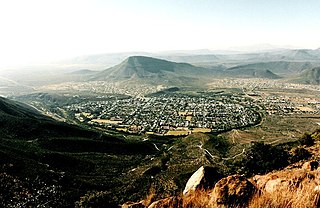
Graaff-Reinet is a town in the Eastern Cape Province of South Africa. It is the oldest town in the province and the sixth-oldest town in South Africa, after Cape Town, Stellenbosch, Simon's Town, Paarl and Swellendam. The town was the centre of a short-lived republic in the late 18th century. The town was a starting point for Great Trek groups led by Gerrit Maritz and Piet Retief and furnished large numbers of the Voortrekkers in 1835–1842.
The following lists events that happened during 1834 in South Africa.
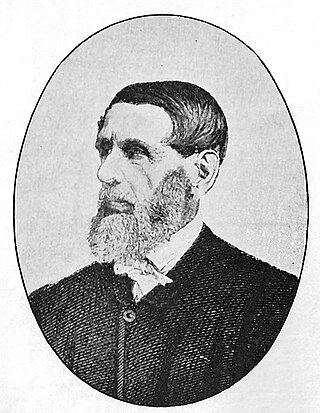
Jacobus Nicolaas Boshof was a South African (Boer) statesman, a late-arriving member of the Voortrekker movement, and the second state president of the Orange Free State, in office from 1855 to 1859.

Nieu-Bethesda is a village in the Eastern Cape at the foot of the Sneeuberge, approximately 50 kilometres (31 mi) north of Graaff Reinet. It was founded in 1875 as a church town, like many other Karoo villages, and attained municipal status in 1886. The name is of biblical origin and means "place of flowing water".

Pearston is a small town in the eastern Karoo, in the Eastern Cape province of South Africa. It lies between Graaff-Reinet and Somerset East at the foot of the Coetzeesberge, about 160 kilometres (100 mi) north of Port Elizabeth. It falls within the Blue Crane Route Local Municipality and has a population of approximately 4,500 people.

Jansenville is a town in Sarah Baartman District Municipality in the Eastern Cape province of South Africa.
Jeremias Frederik Ziervogel M.L.A. was a founding member of the Cape Parliament, in which he represented Graaff-Reinet, South Africa, and was prominent in fighting the Eastern Province Separatist League.
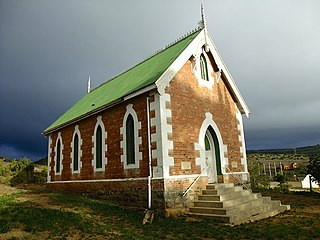
Middleton is a hamlet in the Blue Crane Route Local Municipality of the Sarah Baartman District Municipality in the Eastern Cape province of South Africa. Middleton is situated on the banks of the Fish River off the N10 road and is about 30 km south of Cookhouse.

Dr Beyers Naudé Municipality is a local municipality within the Sarah Baartman District Municipality, in the Eastern Cape of South Africa. The municipality was established by merging the Camdeboo, Ikwezi and Baviaans local municipalities. The decision to merge the municipalities was taken by the Municipal Demarcation Board in 2015 but only took effect after municipal elections on 3 August 2016. The new municipality is named after the Afrikaner cleric and anti-apartheid activist Beyers Naudé. Its seat is in Graaff-Reinet. The merger was motivated by political interests because the ruling party, the African National Congress, was losing support in the area. One of the municipalities, Baviaans, was already governed by the opposition Democratic Alliance.

Reinet House, located in Graaf-Reinet, Eastern Cape, was built by the Cape Government between 1805 and 1812 as Dutch Reformed Church Parsonage It is now a museum. Reinet House was built as a church house for a member of the clergy. It was built by slaves and members of the community.
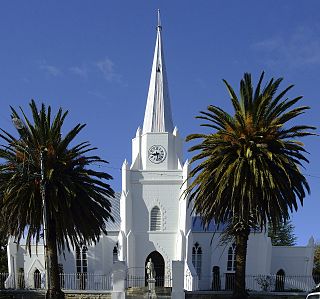
The Somerset-East Reformed Church is the fourth oldest congregation of the Dutch Reformed Church in South Africa (NGK) in the Synod of the Eastern Cape and the 15th oldest in the entire South African denomination.
The Johannesburg North Reformed Church/Andrew Murray Congregation is a bilingual congregation of the Dutch Reformed Church in South Africa (NGK) in the Johannesburg suburb of Orchards. It was formed in 1999 by the merger of the NGK congregation and the Andrew Murray Congregation and functions as a church without borders.
The Linden Reformed Church was a congregation of the Dutch Reformed Church in South Africa (NGK) in the northwestern Johannesburg suburb of Linden. On July 1, 2018, it merged with the Aasvoëlkop Reformed Church to form the Aan die Berg Reformed Church.
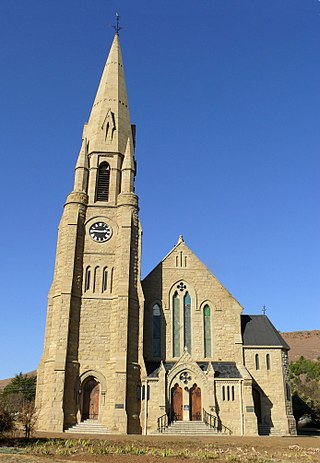
The Dordrecht Reformed Church is the 70th oldest congregation in the Dutch Reformed Church and the 16th oldest congregation in the Synod of Eastern Cape, although it is the 71st and 17th, respectively, to have been founded, because it moved up a place due to the merger of the NG congregation Middelburg with the Middelburg-Uitsig Reformed Church in 2010. The center of the congregation is the town of Dordrecht, Eastern Cape.

The Dutch Reformed Church in Aberdeen is a congregation of the Dutch Reformed Church in the Synod of Eastern Cape. It is one of six congregations established in 1855 in what was then the Cape Colony, and the penultimate of the year. Jansenville, also in the Eastern Province, was first on February 4, Ceres was second on March 21, Sutherland third, then Aberdeen, Heidelberg fifth and Simon's Town sixth. The church is the tallest congregation in the country.

The Dutch Reformed Church in Jansenville was the first of a total of seven congregations of the Dutch Reformed Church that was founded in 1855 and is therefore the 61st oldest congregation in the entire Church and the 13th oldest congregation in the Synod of Eastern Cape. The NG municipality Middelburg, Cape, merged with its daughter municipality Middelburg-Uitsig as Middelburg-Karoo in 2010 and that year has since been indicated as its founding date, because Jansenville moved up one place.

The Dutch Reformed Church in Burgersdorp is a congregation of the Dutch Reformed Church in the Synod of Eastern Cape in South Africa. It is the eighth oldest congregation in this Synod and was founded in 1846, 54 years after Graaff-Reinet. In the entire NG Church it was the 34th foundation, all of which except Pietermaritzburg (1839) and Potchefstroom (1842) were located in the single Cape Colony. In 2016, the congregation had 510 professing and 135 baptized members. Of the professing members, only 200 were under 50, while 140 of the 510 lived locally. On August 17, 2020, the church was damaged by a fire.

The Dutch Reformed Church in Robertson is a large rural congregation in Robertson, South Africa, in the province of the Western Cape and the NG Church's Synod of the Western and Southern Cape. It was founded in 1853 as the 52nd congregation in the entire Church, but is currently (2015) the 51st oldest congregation after the incorporation of the NG congregation Middelburg, Cape with its daughter congregation, Middelburg-Uitsig, in 2010.

The Dutch Reformed Church in Colesberg, with the Northern Cape town of Colesberg as its centre, is the 18th oldest congregation of the Dutch Reformed Church in South Africa, but due to the synodal boundaries that differ from the provincial ones, the fifth oldest in the Synod of Eastern Cape. On 10 December 2011, the congregation was already 185 years old. In 2015, the congregation had 90 baptized and 458 professing members.



















